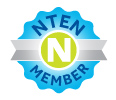Jeff Robins, a Drupal visionary, had a great post on Drupal saving the world.
The entire history of CivicSpace is about using Drupal and CiviCRM saving the world. And the conclusion I have reached is that there is not an ecology in place to make that happen. In fact, the ecology is not even evolving at this point. That ecology needs to generate some basic things:
(1) Technical innovation
(2) Productization
(3) Marketing
There are some assumptions embedded in this analysis. In software there are three important concepts: a product, configuration, customization. A product can just be used by an end user, no muss no fuss. Configuration allows a lay end user to learn enough to set the software up how they need it to work. Customization requires special skills (PHP) to get the software to do what you want.
Getting CiviCRM to accept online donations is a perfect example. If you get CiviCRM through CivicSpace On Demand, it just works-- it is a product. Install CiviCRM yourself and you have to make sense of 50 or so options as you configure it.
Originally, I thought that software could have an impact on social change if it was configurable. I came to the conclusion that this is wrong becuase it is virtually impossible to market a configurable product to small groups involved in social change.
The average social change organization wants software to just work... just like Gmail or Yahoo Mail.
So what does the ecology need to do?
(1) Technical innovation is required to productize Drupal and CiviCRM. Install profiles in Drupal are a first step, but need to be improved. There are a number of other technical innovations involved.
(2) The actual productization is the process of building things like
Buzz Monitor.
(3) Finally, marketing is required to generate enough revenue to sustain products.
All the steps on this path so far have been done by people that forgo health insurance to change the world.... by $5K extracted out of a small nonprofit to fund $15K worth of innovation.... by little innovators operating with little in the way of larger institutional support.
Right now, the Drupal and CiviCRM ecologies do a great job of generating consulting dollars, so there are lots of healthy consulting firms. That open source software will be around forever.
But there seems to be very little movement in the ecology to build products that help small social change organizations on a massive scale.
On the commercial side, many of the firms are too young to be deemed good investments. And investors have a hard time funding technical innovation that is indefensible (open source community).
On the social change side, no one understands the technology strategy well enough to invest in Drupal changing the world. More importantly, we haven't been able to clearly explain how a million dollars invested today directly results in 10,000 grassroots groups sustainably (i.e. no additional philanthropic investment) using Drupal as a platform for social change on the web for the next 20 years.
Seems like an unfortunate missed opportunity.


